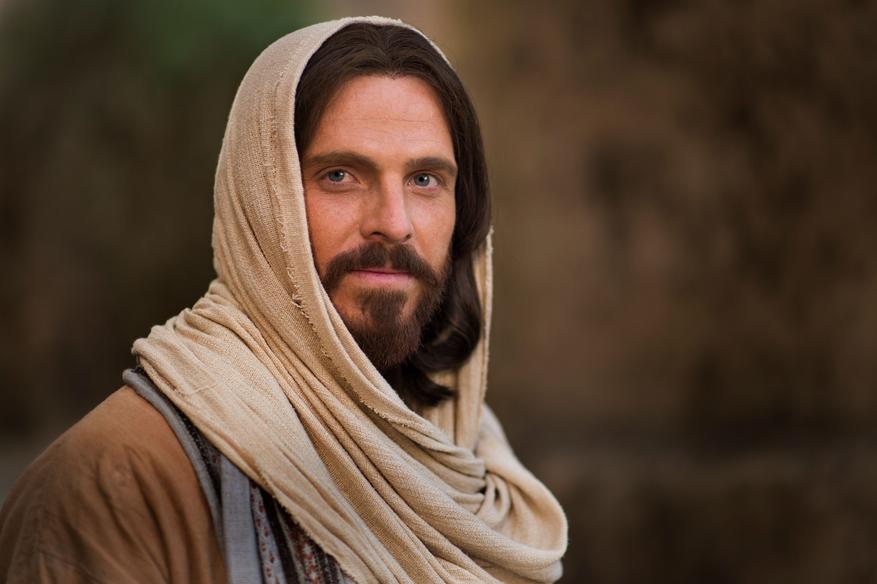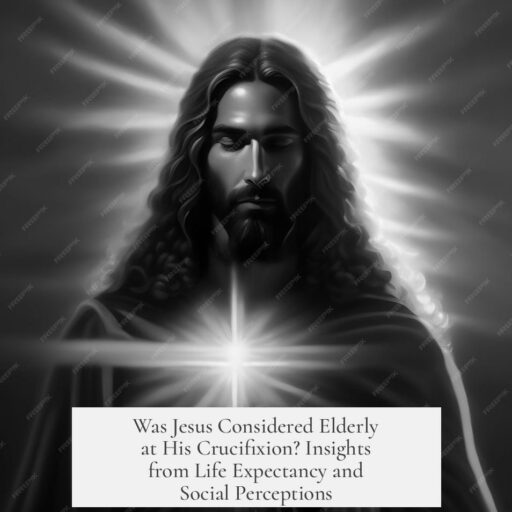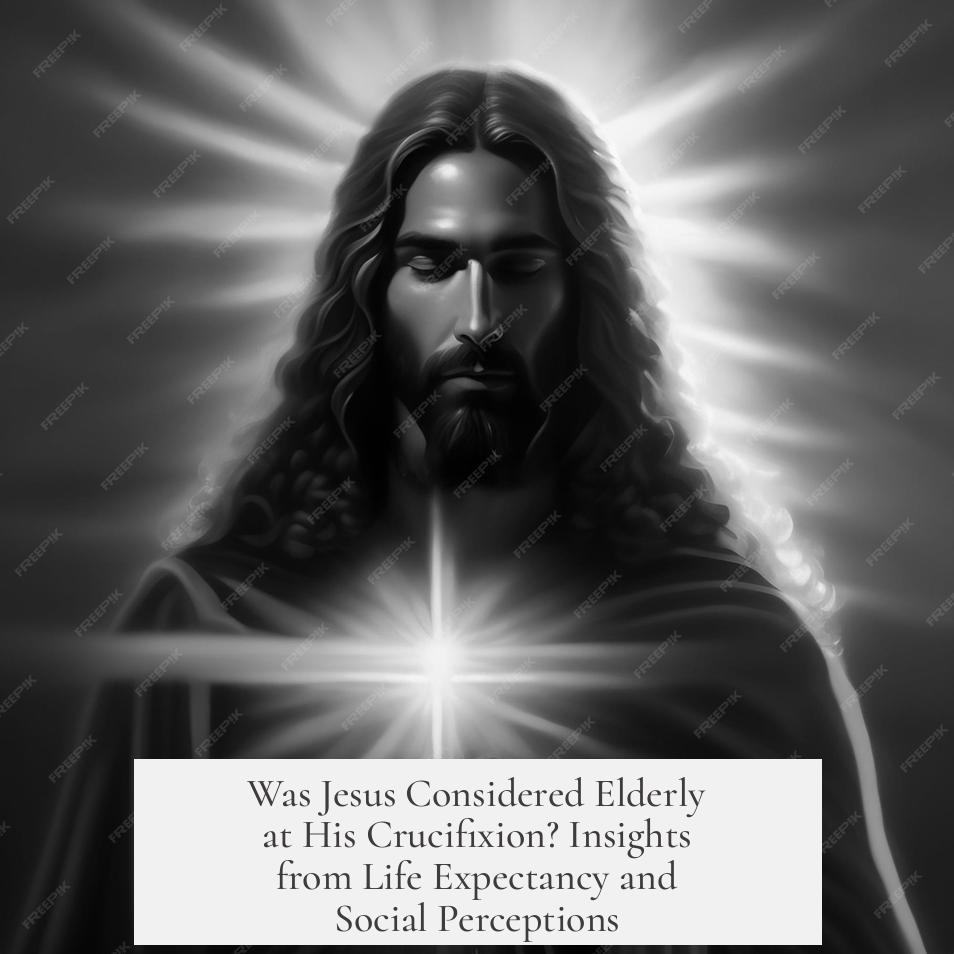Jesus was not considered an elderly man when he was crucified, despite the low life expectancy figures of his time. The common perception of life expectancy in antiquity—often cited around 30-40 years—reflects high infant and child mortality rates, which skew averages downward substantially.

Life expectancy reflects an average age at death across a population. Many children died young; in Classical Rome, about one-third of infants died before age one, and half did not survive past ten years old. These early deaths greatly lowered average life spans.
However, those who survived childhood could typically expect to live much longer. Historical data indicates adults often reached 50 or 60 years of age. Some even lived into their 80s, considered elderly by modern standards.

Social norms of the era saw old age beginning around 60 or 65 years. People in their 30s, such as Jesus at approximately age 33, were viewed as young adults, not elderly. For example:
- Age 60-65 marked exemption from civic duties like jury service.
- Adults in their 30s continued active social and religious roles.
Social class also influenced longevity. Wealthier individuals had better chances to live into their 60s and beyond. Those of lower class—such as farmers or laborers—often faced earlier deaths, but even then, surviving past childhood made living into the 30s or 40s common.

Based on these factors, Jesus’ age at crucifixion fits the profile of a mature but not elderly person. His approximate age of 33 placed him in young adulthood, in line with historical life stages and social views of his time.
| Factor | Typical Age Range / Impact |
|---|---|
| Infant & Child Mortality | High; many died before age 10, lowering average life expectancy |
| Adult Life Expectancy after Childhood | 50-60 years, some living into 80s |
| Old Age Threshold | 60-65 years old |
| Jesus’s Age at Crucifixion | ~33 years; considered young adult |
- Life expectancy averages were heavily affected by early deaths.
- Surviving childhood often led to decades more of life.
- Age 33 was not elderly in Jesus’s cultural or historical context.
- Social class influenced lifespan but did not make 30s old age.
Was Jesus Considered an Elderly Man at His Crucifixion? Debunking Myths with Life Expectancy Insights

Knowing that in Jesus’s time the life expectancy was dramatically low, could it be said that Jesus was already an elderly man when he was crucified? The quick answer is: No, Jesus was not elderly at around 33 years old when he was crucified. But why does this question even arise? Let’s dive into the nitty-gritty of life expectancy in the ancient world and bust some myths along the way.
First, it’s essential to understand what we mean when we talk about “life expectancy.” It’s not a number that tells you how old a person *actually* gets. Instead, it’s the average age at which people in a population die.

Life Expectancy: Not What You Think
If infant and child mortality rates are sky-high, they drag the average lifespan way down. Think of it like this: in Classical Rome, about 33% of babies didn’t live past their first birthday. Half of the children died before hitting the big 10. Ouch, right? So naturally, the average life expectancy would sound pretty grim.

But, here’s the kicker. Those who survived the brutal early years often had a good shot at living much longer. For example, if someone made it past the age of 10, they could expect to live into their 50s or 60s—and some even reached their 80s, a true feat for that era.
So, What About Jesus?

Jesus was traditionally crucified at about 33. Does that age fit into the “elderly” category in the first century? Not even close. Back then, reaching your 30s was considered early adulthood—not creeping up on the rocking chair phase.
Ancient societies often marked old age at 60 or 65. By then, people earned a sort of “retirement,” like being exempt from jury duty. So, if you were 33, you were more in the “prime of life” group. Even if your community faced harsh living conditions, 33 was young—definitely not elderly.
Class Matters: Rich or Poor, It’s Different
Here’s another twist: life expectancy was a game of social class. If you were a poor farmer or worker, your odds of living past 20 to 40 were, well, slim. The harder your labor, the more your body would wear down early. Not to mention fewer resources for proper nutrition and healthcare.
On the flip side, wealthier folks had a leg up. They could expect to live into their 60s or even 70s. Given that Jesus was a carpenter—likely from a lower-middle class—his life expectancy would have been somewhere in the middle. Still, 33 wasn’t anywhere near elderly, even for his social standing.
A Closer Look at Social Perceptions
It’s easy to project modern-day ideas of age back onto historical figures. Today, 33 is young. But someone might wonder if people back then felt different. The truth? They didn’t. Being “old” was more about visible signs: gray hair, weakened body, or being around for decades. A 35-year-old was just hitting their stride.
In fact, those ancient laws and social customs confirm this. The age 60 or 65 meant you were elderly, not mid-30s. So, descrying Jesus as elderly simply because overall life expectancy was low is a mistaken leap.
Why Does This Matter? Benefits of Understanding Historical Context
Stories rooted in history become clearer when we unpack the context. Understanding life expectancy and social norms stops us from making wrong assumptions about Jesus’s age and status.
Plus, it helps us humanize people from the past. They faced challenges, sure, but life stages felt familiar. Their 30s were full of energy and responsibility—not old and frail.
Think about this next time you hear someone call Jesus “elderly” at his crucifixion. You can confidently say: “Nope, he was a young man in his prime!”
Personal Reflection and Modern Example
Imagine a 33-year-old today—you probably think about career, family, dreams. Now, picture in the 1st century—no modern medicine, tough living—but still, 33 was a vibrant age with many years potentially ahead.
It shines a light on the resilience of life back then. Surviving childhood was the biggest hurdle. After that, adults embraced life with vigor. The idea of “elderly” was reserved for those who truly earned their gray hairs and wisdom by living six decades or more.
Summary Table: Life Expectancy and Age Perception in Jesus’s Time
| Category | Details |
|---|---|
| Infant Mortality | 1 in 3 babies died before age 1 |
| Child Mortality | Half of children died before age 10 |
| Survival Past Childhood | Life expectancy rose to 50-60 years, some into 80s |
| Age Considered “Elderly” | 60 or 65 years old |
| Jesus’s Age at Crucifixion | Approximately 33—young adult, not elderly |
| Effect of Social Class | Poor: died 20-40; Rich: 60-70+ |
Final Word: Jesus Is Young at Heart (and Body) at 33
The idea that Jesus was elderly when crucified is more myth than reality. Life expectancy numbers are tricky—they reflect averages pulled down by high child mortality, not the fate of everyone.
Jesus, at about 33, was in the fullness of young adulthood. Social norms, survival data, and class considerations all point the same way.
So next time you hear whispers of Jesus being elderly at crucifixion, remember this detailed dive. History says otherwise—and that adds a fresh, accurate lens to our understanding of that pivotal moment in history.
Was Jesus considered elderly at the time of his crucifixion?
No, Jesus, around 33 years old, was not considered elderly. People surviving past childhood often lived into their 50s or 60s. In the first century, 60 or 65 was seen as the start of old age.
How did high infant mortality affect life expectancy in Jesus’s time?
High infant and child deaths lowered the average life expectancy. Many died before age 10, but those who survived childhood could live many more decades.
Did social class affect how old people lived in ancient times?
Yes, life expectancy varied by social class. Poor people might die between 20 and 40, while the wealthy often lived into their 60s or 70s.
Would a 33-year-old be seen as a young adult or elderly in Jesus’s society?
A person aged 33 was viewed as a young adult. Old age generally started around 60 or 65, when many public duties were lifted.



